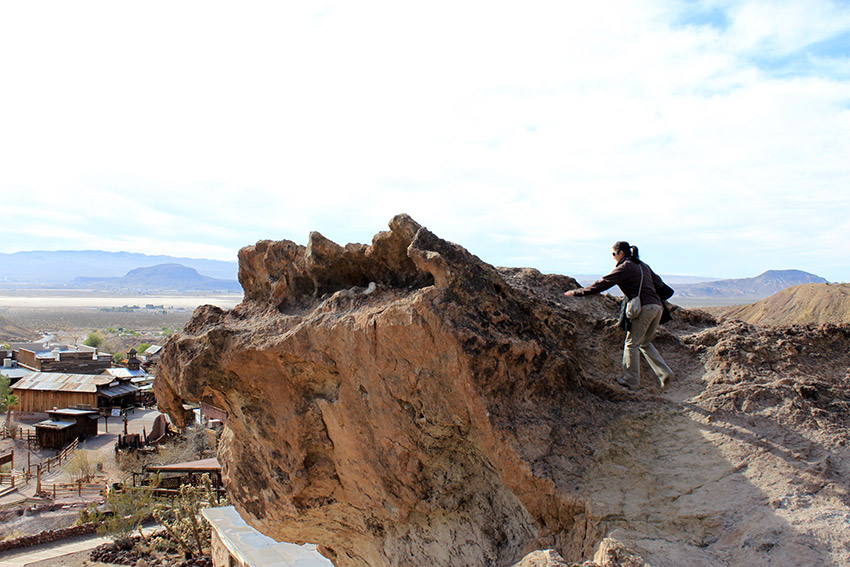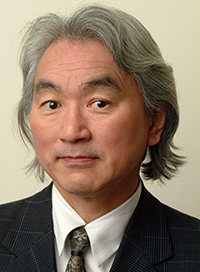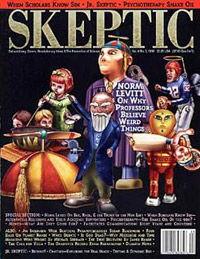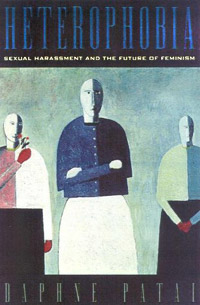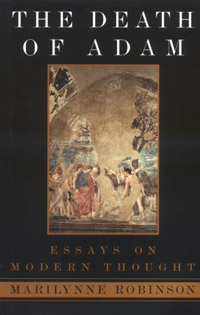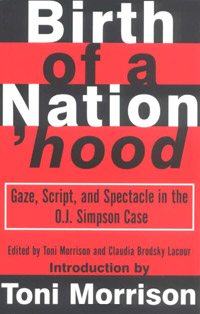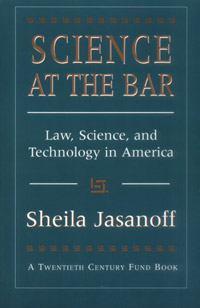In this week’s eSkeptic:
Explore the Wonders of Southern Nevada!

Petroglyph detail
We will travel along the Extra-terrestrial Highway near the north gates of Area 51, and have lunch at the famous Little A’Le’Inn in Rachel, Nevada. We will take a tour of the National Atomic Testing Museum in Las Vegas. In addition, we will visit the stunning alien landscape of Valley of Fire, collect 520 million-year-old trilobites, and revisit the Old West at Calico Ghost Town. Come join us and see some of the most amazing scenery in the world! Only 8 seats left, so download the registration for a reserve now!
Register ASAP by calling 1-626-794-3119 with a credit card to secure your seat.
To view a larger image gallery of 12 photographs from this tour, visit this tour’s webpage, then click any of the small images to enlarge them. Then, click the right side of an image in the image gallery to advance through 12 photos.
What’s Included?
Tour package includes charter bus, two nights’ lodging in Las Vegas, all breakfasts and lunches, natural science lectures en route, museum and park fees, and a tour guide booklet. Your trip fee also includes a $150 tax-deductible donation to the Skeptics Society.
Register ASAP by calling 1-626-794-3119 with a credit card to secure your seat.

NEW ON SKEPTICBLOG.ORG
Bright Horizons
Do you feel it? That soaring quality in the air, that sense that this is a year we accomplish beautiful, useful things? That this is a year when we will make the world a little bit better? Daniel looks back over some highlights of 2013, and expresses his excitement for the year ahead in scientific skepticism.
Hoaxed Bigfoot Bodies Floating at the Disreputable Low End of Bigfootery
Daniel wishes he didn’t have to wade into the unseemly muck at the bottom end of Bigfootery.
New Organization: The Society for
Science-Based Medicine
Our colleagues over at the Science-Based Medicine blog, including Skepticblog’s Steve Novella, have announced the creation of a new advocacy and educational organization,the Society for Science-Based Medicine.
New NCSE Executive Director Ann Reid
Daniel welcomes brand new National Center for Science Education Executive Director Ann Reid.
Michio Kaku, On Demand
Physics of the Future
In this lecture, based on the book Physics of the Future: How Science Will Shape Human Destiny and Our Daily Lives by the Year 2100, physicist Michio Kaku takes us on a journey into the future to reveal the revolutionary developments in medicine, computers, quantum physics, and space travel that will forever change our way of life and alter the course of civilization.
Rent this video for only $3.95
or explore the entire series.
INSTRUCTIONS: Click the button above, then click the RENT ONE button on the page that will open in your Internet browser. You will then be asked to login to your Vimeo account (or create a free account). Once you complete your purchase of the video rental, you will then be able to instantly stream the video to your computer, smartphone, or tablet, and watch it for the rental period.

Nature’s Rich Bounty
If Bigfoot is real, would a $10,000,000 bounty be enough to bring the beast down? That’s the premise of a new show on Spike TV. In this episode, MonsterTalk interviews two of the scientists who are working on the show to find out if this is a serious search for Bigfoot, or just folks out in the woods raising cane.
Get the MonsterTalk App
Get the MonsterTalk Podcast App (presented by Skeptic Magazine) and enjoy the science show about monsters on your handheld devices! Available for iOS, Android & Windows 8 devices.

Dr. Todd Disotell & Natalia Reagan
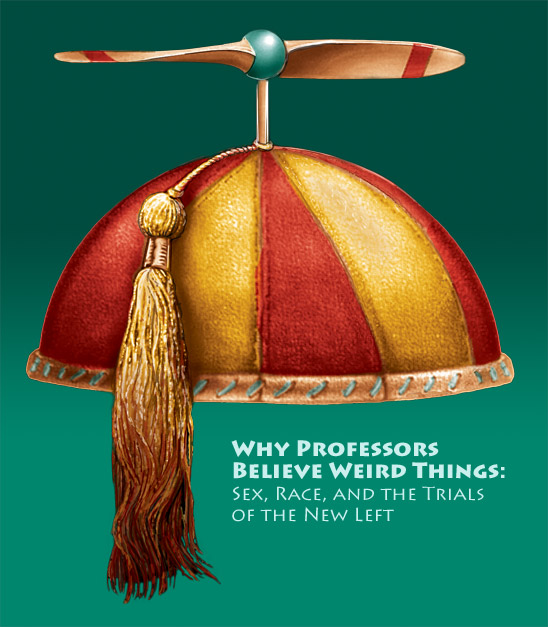
Illustration by Pat Linse
About this week’s eSkeptic
In this week’s eSkeptic, Norman Levitt discusses some of the intellectual follies of leftist postmodern academics who would denounce science in favour of fringe science, pseudoscience, and outright antiscience. This article appeared in Skeptic magazine issue 6.3 (1998).
Books discussed in this essay include: Daphne Patai. Heterophobia: Sexual Harassment and the Future of Feminism. Lanham, MD: Rowman & Littlefield, 1998; Jodi Dean. Aliens in America: Conspiracy Cultures from Outer Space to Cyberspace. Ithaca: Cornell University Press, 1998; Marilynne Robinson. The Death of Adam: Essays on Modern Thought. New York: Houghton Mifflin, 1998; Toni Morrison and Claudia Brodsky Lacour (Eds.). Birth of a Nation’hood: Gaze, Script, and Spectacle in the O.J. Simpson Case. New York: Pantheon Books, 1997; Sheila Jasanoff. Science at the Bar: Law, Science, and Technology in America. Cambridge: Harvard University Press, 1995.
Why Professors Believe Weird Things:
Sex, Race, and the Trials of the New Left
by Norman Levitt
Why do professors believe weird things? Well, why shouldn’t they? Our common humanity makes folly commonplace everywhere. There is no reason to expect that an academic should be less susceptible to peculiar ideas than the average guy. For some disciplines, a kind of gullibility seems a prerequisite. How could you be a mathematician if you didn’t believe that it’s important to know whether every even number greater than two is the sum of two prime numbers? Pretty weird! On the other hand, purely personal idiosyncrasies abound, and can generate gross credulity as well. Some professors even vote Republican. You can’t get any weirder than that! In this essay, however, I shall be discussing the odd beliefs of a faction of the professorate which certainly does not vote Republican.
The crux of the matter is a kind of free-floating leftism, sometimes rigidly doctrinaire, sometimes sentimental, sometimes loudly proclaimed, sometimes elaborately disguised. I pick on campus leftists with a combination of amusement, bemusement, and despair. If there’s a serious problem here it’s certainly not that the universities are going to turn out vast armies of Marxist-feminist-deconstructionist eco-freaks to ravage the sacred institutions of modern capitalism. The danger, soberly speaking, goes the other way. The tradition of social criticism from the left, already desperately marginalized, is likely to disintegrate altogether as it is morphed into a species of academic silliness. Yes, I’m a leftie too—in my own banged-up, tattered, and cynical way. It’s my turf, harboring my hopes and my ideals, that’s being laid waste, however inadvertently, by all this dottiness. In between the sneers, I’d like to get people thinking about ways to salvage something from the wreckage. But there will be sneers aplenty. Frankly, I’ve had my fill of professors who wear their hearts on their sleeves, but use their heads as do-it-yourself proctoscopes.
I should have known something strange was afoot back in the 70s when my grad-student wife brought home a fellow student’s doctoral dissertation. The author, a militant lesbian separatist, had smuggled in a remarkable little footnote. Strict social separation of the sexes, said she, might induce women to reproduce parthenogenetically! Imagine—a miracle of literally biblical proportions solemnly accepted into the archives of scholarship! But what of her teachers and advisors? How could they have let “virgin birth” pass unchallenged? The answer, of course, lay in the intellectual attitude that even then had taken root. The nuttiness had been put forward in the name of militant feminism, and woe betide the professor, in that leftish milieu, who had the temerity to denounce it outright.
This pattern should be borne in mind while considering Daphne Patai’s new book Heterophobia, an excellent examination of the ideological origins and concrete effects of the so-called “sexual harassment” codes that have proliferated on campuses nationwide. Like any sober observer, Patai concedes that strong remedies were needed to put an end to the various forms of quid pro quo sexual blackmail that infested universities for decades while drawing only shrugs and rationalizations from administrators. She is aware, as well, that a swarm of statutes and court decisions has put higher education under intense pressure to maintain a “comfortable” environment for sensitive women. But her chief concern is the tone of the measures adopted to achieve these ends, the philosophy behind them, and the hidden agenda they subserve. As she demonstrates convincingly, much of the present “anti-harassment” machinery was created by a tight-knit and aggressive group of militant feminists for whom heterosexual entanglements of any kind are automatically suspect. She traces their thinking to the radical, gender-separatist wing of 70’s feminism, as well as to the sexual phobias of well-known theorists like Catherine MacKinnon and Andrea Dworkin. From this perspective, a male, whether ditch digger or analytic philosopher, is little but the sum of his lust and aggression. “Somewhere along the line, then,” Patai notes, “the feminist criticism of patriarchal institutions derailed into a real, visceral, and frightening antagonism toward men and a consequent intolerance toward women who insist on associating with them.”
Often abetted by the institutional leverage of “Women’s Studies” departments, feminists committed to this sour view of heterosexuality frequently devise, promulgate, and administer the sex codes that are now commonplace. Not surprisingly, there has been more than a handful of cases where male teachers have been railroaded—deprived of due process, prohibited from confronting their accusers, and summarily punished. Even worse, the ideological presuppositions of radical gender-feminism led to an ever-expanding notion of “harassment.” You can be arraigned, tried and even dismissed without having been charged with so much as flirting, let alone serious sexual extortion. You need only make a remark or two that can be taken the wrong way by a touchy feminist sensitivity to get yourself into hot water. Heterophobia is scariest when it recounts a number of such case histories. I found it especially chilling that all of these horror stories were new to me, although I have followed this issue attentively in recent years.
Weirdness comes into this situation through the fundamental axioms of the “feminism” that dominates university life. It offers a reductive, condescending view of both men and women, a ridiculously simple-minded and censorious version of love, courtship, seduction and flirtation. To deal with the relatively small number of cases of real coercion, feminism is willing to banish all the nuance and ambiguity from sexual encounters, with the clear intention of making these as joyless and uninviting as possible. Even worse, current feminist doctrine invents several new categories of thought-crime, the most heinous of which is to question or contest current feminist doctrine. “Harassment” theory is a very serviceable tool for putting muscle behind the imperial aspirations of Women’s Studies. It shrewdly guilt-trips those campus liberals who will agree to all sorts of nonsense rather than let themselves be labeled misogynist.
Patai’s thoroughly researched, eloquently argued book deserves a wide audience, especially among perplexed academics of both sexes. Still, a few of its points can be questioned. I’m not convinced that the social effect of feminist-inspired sex codes will be as widespread or as long lasting as she assumes. Outside the academic hothouse, and despite the proliferation of legally-mandated workplace anti-harassment regulations, almost all people conduct their sex lives in blithe indifference to feminist ideas (the worthy ideas, along with the nonsense). Arguments that reduce academic circles to abject terror would be given the bum’s rush most everywhere else. But even on campus, contradictions are rife. Yale, for instance, almost wrecked a young mathematician’s career through a kangaroo-court proceeding that banished him over allegations (probably untrue) of a brief affair with an undergraduate. But Yale has also refused the request of Orthodox Jewish freshmen to avoid living in a co-ed dormitory where, presumably, all sorts of lively, old-fashioned, heterosexual screwing goes on unchecked. The relaxed sexual ethic of the well-to-do middle class is firmly embedded in campus life, despite its inconsistency with radical-feminist prudery.
Something has to give, eventually, and my guess is that it’s doctrinaire feminism that is slated to get the chop. This will be accelerated as more and more targets of absurd harassment charges hit back through damage suits. Fear of such retaliation makes a number of schools (my own, for instance) much more circumspect in imposing and enforcing harassment codes than the worst-case examples Patai cites.
Finally, I think that Patai overrates the power of feminist theory even at those institutions where draconian punishments have been handed out for slight or nonexistent offenses. In my view, these abuses happen because administrators fear the wrath of (emphatically unfeminist) moral traditionalists at least as much as the fury of the Women’s Studies Department. Mommies and daddies frantic at the prospect that their princesses might be debauched by faculty smoothies are even more terrifying than fully MacKinnonized victim’s rights advocates.
Jodi Dean, nominally a political scientist via Princeton (B.A.) and Columbia (Ph.D.), is one of the many practitioners of feminist ex parte scholarship who have engorged the literature of harassment theory Patai so ably dissects. A Dean piece in the Yale Journal of Law and Feminism is a typical mezzo-forte example of the genre, a minor fumarole of self-righteousness, shallow and reductive (at least as regards hetero males). It informs us that “the reasonable person or man cannot mediate between the public and private spheres because he brings with him the typical trappings of masculinity.” Dean is versatile, however, and lately she has traded the eyestrain of legal exegesis for the raptures of cultural studies. A recent project is to fill a much-needed gap in the scholarly literature (sorry for that old joke) with a symposium on the deep cultural significance of Martha Stewart. But her current book, Aliens in America, harbors ambitions even more baroque. It is pledged to the cause of UFO-groupies, especially those who go the whole hog, claiming they have been abducted by aliens (whose respect for sexual harassment regulations is notoriously minimal.)
Dean’s thesis is that the terrors of contemporary existence, the anomie and sense of impotence it breeds, are given cultural expression through the UFO-abduction myth. The villains she cites would find a place in any leftist’s list of bad guys: economic insecurity under capitalism, the threat of environmental degradation, rampant militarism, racism, cultural misogyny, and so forth. But the UFO cult is her pet “site of resistance” to these horrors. Note that she does not propose that UFO mania is a delusion bred by the unfairness of life in today’s America. For Dean, to label anything delusional is completely inadmissible, the sign of an oppressor mentality. The very idea that thoughtful, intelligent people might be able to make reliable distinctions between objective reality and outright fantasy is verboten. “Indeterminacy” rules unchecked. Copiously dishing out the most tiresome postmodern cliches, Dean posits a world that is nothing but a ferment of conflicting subjectivities. In her universe, “truth” lies everywhere and nowhere. The only reprehensible subjectivity is the one that believes in science, rationality, and empiricism, crediting the human race with at least the possibility of clear thinking. Clear thinking alarms Dean; “common rationality” is hideously oppressive, political choice “virtually meaningless:”
Faced with gigabytes of indigestible information, computer-generated special effects, competing expert testimonies, and the undeniable presence of power, corruption, racism, and violence throughout science and the law, voters, consumers, viewers, and witnesses have no criteria for choosing among policies and verdicts, treatments and claims. Even further, we have no recourse to procedures, be they scientific or juridical, that might provide some “supposition of reasonableness.”
Science, that notorious stew of “corruption, racism, and violence,” is at the top of Dean’s bleep-list. That it might have the competence to pronounce on the plausibility of UFO-lore is not to be contemplated for a second. Indeed, it’s the UFO nuts, one infers, who deserve to be ranked with the philosophical giants of the postmodern age:
The early ufologists fought against essentialist understandings of truth that would inscribe truth in objects (and relations between objects) in the world. Rejecting this idea, they relied on an understanding of truth as consensual. If our living in the world is an outcome of a consensus on reality, then stop and notice that not everyone is consenting to the view of reality espoused by science and government.
Move over, Foucault and Derrida!
For a nominal leftist, Dean is guilty of some curious omissions. Though she makes frequent mention of UFO-abduction impresarios like Whitley Strieber and Budd Hopkins, she never thinks of looking at their Dun and Bradstreet ratings to learn how much they are netting from the racket. For her, everyone reporting an eerie encounter with those pesky alien critters is a soul in pain, courageously defying the suffocating consensus-reality of our culture and nobly braving its scorn. It never occurs to her that “abductees,” whether fakers or sincerely self-deluded, make their claims for the same spectrum of reasons that prompts hundreds of people to make asses of themselves in front of Jerry Springer’s audience. There is an obvious etiology: Wistful people, feeling insignificant and bored, envious of celebrities, pathetically eager to supplant the tedium in their lives by mythic glamor, concoct weird tales from a stock of common folklore, sometimes conning themselves, even more than others, in the process. But Dean doesn’t even bother to refute this. Nor does she allow that in today’s latitudinarian culture, it takes more than a first-person narrative of alien sexploitation to make someone into a pariah. For many claimants, going public with an abduction story is a pretty good career move, rather like Dean’s own decision to refashion herself as a transgressive (read: wiseass) postmodern academic.
Dean’s deepest sin, finally, lies in her implicit contempt for the egalitarian, democratic ideals that probably once inspired her. Her refusal to pass judgment on faddish delusions and outright fakery really equates to deepest scorn for the people with whom she affects to sympathize. She dismisses, with categorical disdain, any possibility of evolving a citizenry educated, astute, and mature enough to scrutinize the world accurately and reach appropriate conclusions through logic and evidence. In so doing, she hands over power, in perpetuity, to cranks, con-men and, worst of all, demagogues.
Less appalling than Dean’s book, but even more depressing, is a recent work from feminist novelist Marilynne Robinson, an esteemed teacher at the University of Iowa Writers’ Workshop. Robinson, I note, is a feminist who has resolutely refused the poisoned apple of postmodernism. Unlike Dean and a swarm of others, she is not interested in weaving a magic carpet of “gender theory,” good only for flying one off to tenure-land. To her great credit, her brand of feminism is centered on salvaging and repairing the lives of women genuinely injured by the cruelties endemic to our culture. Far from habitually bracketing “truth” in sneer quotes, she genuinely believes in truth—in fact a single encompassing Truth, uniting the intellectual, ethical, spiritual and, indeed, the theological verities. That’s the problem. If the postmodernist tribes try to believe in too little, Robinson tries to believe in too much. She wants us to accept a redeeming vision of the physical and moral universe, one where reality and morality tightly embrace. In the “Darwinism” chapter of her book, The Death of Adam, Robinson argues at great length—eloquently, passionately, and, indeed, movingly—on behalf of an idea that is (there is no other way of putting this) just plain stupid. Her thesis is simple and severe: “Darwinism” is nothing more than a cynical ideology spawned by a cabal interested in preserving a grossly unjust social order. More than ever, it still serves that vile end. Here, in short, is her prosecutor’s brief: “[W]here does this theory [Darwinism] get its seemingly unlimited power over our “moral” imaginations, when it can rationalize stealing candy from babies—or, a more contemporary illustration, stealing medical care or schooling from babies…? Why does it have the stature of science…when it is…only mythical, respectabilized resentment, with a long, dark history behind it?”
Lest the reader think that something subtle is going on here, let me set out a little glossary:
- Evolution: The principle that existing species, including the human race, are modified descendants of earlier species.
- Darwinism: The principle that evolution takes place, in large measure, as a result of random variation on which the pressure of selection operates. There is, in particular, no blueprint or roadmap, ordaining “progress,” to which evolutionary processes must conform.
- Social Darwinism: A political philosophy claiming that unchecked pursuit of self-interest, and societal indifference to poverty and misery, is the path to socio-cultural optimality.
Now, Robinson is unashamedly an “evolutionist” in the sense of (1) above. In no wise is she a biblical literalist. Where she comes comically to grief is in failing to respect the totally obvious and common-sense distinction between (2) and (3). Even allowing that there has been a long history of attempting to justify (3) by appeal to (2) (hence the label “Social Darwinism”) the linkage between the two ideas was sundered long ago. “Darwinists,” overwhelmingly, find “Social Darwinism” repellent. Indeed, in recent decades one principal project of evolutionary theory— Darwinist evolutionary theory—is to account for “altruistic” behavior, which is clearly as much a legacy of selective pressure as other behavioral traits. But for Robinson, the link between Darwin and Satan is absolute. She doesn’t even pay lip service to the possibility that one might be a “Darwinist” without having any inclination to throw in with the “Social Darwinists.” In her view, Darwinism is both motive and rationale for devil-take-the-hindmost social philosophy. One can understand her bitterness, her urge to rail against someone for the mean-spiritedness of the age. She is quite right in seeing the politics of our time as dominated by knaves who despoil the poor on behalf of the wealthy. But her choice of philosophical bad guy is absurd, from an historical point of view, and her choice of contemporary real-life bad-guys even worse. Malediction upon Daniel Dennett and Stephen Jay Gould! Never mind that the former is on record as thinking Social Darwinism ethically repellent and intellectually insupportable, while the latter, famously leftist in his politics, has been on the warpath for decades against all attempts to extract conservative social precepts from the facts of evolutionary biology. Robinson’s history is similarly cockeyed. She recounts the Scopes Trial, reminding us that William Jennings Bryan opposed evolutionary theory not only as a fundamentalist, but also as a leftist fearful (like herself) of the nasty effects of “Social Darwinism.” But in her sneering description of Clarence Darrow, one would never recognize a man who, like Bryan, devoted a lifetime of eloquence to the struggle of ordinary Americans against the plutocracy. How odd that a novelist misses all the irony and tragedy of the confrontation. And how unfair not to acknowledge that our era has been made aware of Bryan’s worthy political motives largely through the work of Darwinist Stephen Jay Gould.
Robinson’s political judgment is just as disordered. She is blind to the real “cultural” meaning of Darwinism. It’s obvious that if the franchise were restricted exclusively to Americans who accept the precepts of natural selection, left-wing social democracy or possibly something even more radical would come to power in an instant. On the other hand, Robinson is mealy-mouthed about the Right’s clear enthusiasm for Darwin-bashing, which has lately been the rage even among “intellectual” conservatives. All these solecisms make it pointless to comb Robinson’s text for ignorance of science itself, although it abounds. The saddest thing is that Robinson is deluding herself about her own motives. At heart, she is an old-fashioned theist, an honest-to-gosh Christian, who wants to believe that a merciful deity stands at the helm of the universe. Darwinism, in its relentless refusal of comforting teleology, may not refute religion flat out, but it quashes any hope that it can give a parsimonious account of the universe and humanity’s place in it. This transgression Robinson cannot forgive. Darwin becomes her whipping boy for the entire spectrum of current evil. But her spitefulness— invisible, one suspects, only to her—utterly subverts her claim to be a moralist for our time.
Toni Morrison, a novelist even more celebrated than Robinson, is chiefly responsible for our next example, a compendium of pieces (edited by Morrison and her Princeton colleague Claudia Brodsky Lacour) dealing with, yes, the O.J. Simpson trial. Even considering the tsunami of Simpson books, it is surprising that this volume has received so little attention from reviewers and commentators. Morrison’s fame, and the academic renown of many of her contributors, as well as the combative tone of most of the essays, ought to have won it some substantial attention. One suspects that if anyone has schemed to relegate this book to obscurity, it’s Morrison’s friends, not her enemies. In her introduction, Morrison gives her own emphatic view of the Simpson case. “I have wasted piles of paper trying to complete a believable narrative,” she says of her supposed attempts to envision Simpson as a murderer. “All my efforts collapsed into nonsense.” (This, mind you, from a writer whose last novel, Paradise, concerned a black community whose patriarchs, enraged by the seeming indifference of a houseful of women to their authority, slaughters the lot.) The strain of such improbabilities produces large cracks in Morrison’s much-admired prose style; in this instance it is coy, wheedling, and shrill. Would-be eloquence decays to petulance.
Morrison’s collaborators include a flock of well-placed academics: Professors Kimberlé Crenshaw and Patricia Williams of Columbia Law, Professor Drucilla Cornell (a crony of Jacques Derrida) of Rutgers Law, Professors David Roediger and Andrew Ross (Directors, respectively, of the American Studies Programs at the University of Minnesota and New York University). For these, as all other contributors, Morrison’s word is law. None has the temerity to state that Simpson is guilty, or that he is probably guilty, or even that the prosecution had a pretty good case against him. The party line is that the Simpson episode, in every aspect, was merely the projection of white racist phobias. By contrast, the black community (particularly as represented by the jury) is praised for having responded with healthy skepticism and common sense! Though many on Morrison’s team are prominent feminists, the feminism that appears here is meek and muted. After all, Morrison’s fellow novelist Ishmael Reed, long an antagonist of academic feminists black and white, is also on the squad. And clearly, it would not be politic to make too much of Simpson’s penchant for beating the hell out of Nicole.
Of the Simpson criminal-case jury, Andrew Ross remarks scornfully:
Not one juror read a newspaper regularly; eight regularly watched trash-TV shows like Hard Copy; and five thought it was acceptable to use force on a family member. And nine—three quarters of the jury— thought O.J. Simpson was less likely to have murdered his wife because he had excelled at football.
“Scary” says Ross.
Whoa!! Can these be the words of Professor Andrew Ross, tribune of the underclass, who champions every twitch of its transgressive folkways? Well, actually, they can’t. The unimpeachable common sense cited above is not part of this book. It comes, in fact, from journalist and Salon (the online magazine) editor Andrew Ross, a different fellow altogether. Professor Andrew Ross appears in Morrison’s volume as the team’s Barry Scheck, its resident DNA expert. The performance recalls Ross’s role as theoretical physics editor for Social Text. Repeatedly, frantically, and absurdly, he tries to convince us that in accepting DNA markers for purposes of identification, we are covertly endorsing the racial theories of Herrnstein and Murray’s The Bell Curve. Ross fumes like a natural-born ambulance-chaser against “the applicability of quantitative reasoning to courtroom procedures designed to respect principles and values other than those acknowledged by science.” He continues: “If complex scientific testimony increasingly becomes a customary presence in the courts, what are the prospects for continued respect for lay judgment?” Translation: As forensic science becomes more comprehensive, accurate, and reliable, it gets harder and harder for felons to beat the rap. What a calamity!
Like a number of other contributors, notably Kimberlé Crenshaw and (jointly) Nikol Alexander and Drucilla Cornell, Ross goes all out to redeem the reputation of the Simpson jurors. These arguments backfire pathetically, especially if one reads them with a copy of Vincent Bugliosi’s Outrage near at hand. It might have been possible to respect, however uneasily, a hypothetical juror who used the Simpson case to get even with all the cops who have planted drugs on black men under arrest or guns on black men killed by police bullets. But in seeking to extol the jurors as sober, responsible, discerning, and just, the book merely reveals them as pathetic dupes besotted by their own fantasies.
The contributors are predictably vituperative towards Det. Mark Fuhrman, ignoring that fact that in retrospect, Fuhrman’s greatest sin was that anatomized in Elmore Leonard’s Get Shorty: he wanted to peddle a screenplay. But while flaying Fuhrman is forgivable, the snotty treatment handed out to Christopher Darden is not and, in the case of the essay by writer Armond White (not an academic— yet), it is utterly vicious. No one honestly confronts the fact that Darden, whatever his courtroom flaws, was a man convinced to an intellectual and moral certainty of Simpson’s guilt, a decent citizen who did his damnedest to procure justice for the victims and their families.
The agitprop simplicities of these texts undermine their authors’ reputations as sophisticated navigators on the high seas of theory. Contrary to their customary postmodern pretensions, they have a very tough time dealing with the sad complexities and cruel ironies of the world. Above all, they resist the hardest truth about racial oppression: It doesn’t endow its victims with superior wisdom, insight, compassion, or even shrewdness; it merely messes them up. Rumbling beneath their tirades, a wrenching fear besets these authors. They quake at the idea that the average citizen, that is to say, the average white citizen, has a keener understanding of the Simpson case and its social implications than is allowed by their own rigid doctrinal commitments. Even worse, there is the truly terrifying possibility that all those conventional academic-liberal professors, over whose acquiescent bodies Morrison’s pals have cursed, kicked, and clawed their way to scholarly stardom, understand the case better as well.
Unlike the books of Dean, Robinson, and Morrison, Sheila Jasanoff’s Science at the Bar does not wear its weirdness openly. This makes it our most interesting—and most ominous— example of academic intellectual perversity. Jasanoff’s book deals with the problem of scientific evidence in courtrooms and quasijudicial regulatory proceedings. It has been widely and favorably reviewed by scientists, lawyers, and administrators alike, and has become something of a standard in the field. Yet it is deeply contaminated by bizarre philosophical postulates reflecting an immoderate distaste for science and its cognitive authority.
Jasanoff is a very clever woman, not only as a rhetorician, but also as an academic tactician. Why shouldn’t she be? She was a mathematics major at Harvard in the early 60s, alongside me—and confessed unabomber Ted Kaczynski. Without imputing the slightest tendency towards violence, I claim that, in terms of her underlying attitude towards science and technology, she is much nearer Kaczynski’s philosophy than mine—or that of the overwhelming majority of scientists. How, then, have the scientists reviewing Science at the Bar failed to take notice of this dislike? Largely because Jasanoff is unusually cautious about displaying her postmodern “transgressivity.” Her carefully worded book slips in its radical claims almost unnoticed. Jasanoff’s infernal devices—intellectual ones, of course—have delayed-action fuses. She is, in fact, a radical “social constructivist” in her understanding of science, believing that science is simply the set of interpretive conventions of one special group of people—the scientists—in its attempts to come to terms with experience. Social constructivism is inescapably bound to cognitive relativism, the idea that each community has its own “episteme,” its own way of understanding the world, and that all such “ways of knowing” stand on equal footing. None, not even science (especially not science, from Jasanoff’s point of view) can claim to overrule any of the others when there is conflict. But, in Science at the Bar, this philosophy is so carefully camouflaged that it’s hard to see unless you already suspect it’s there and know what signs to look for.
Jasanoff’s central thesis is that science ought to be given no special privileges as disinterested, objective, expert knowledge when it comes into the courtroom. Why? Because “scientific claims also seem to incorporate factors unrelated to the presumed cognitive concerns of science, such as the institutional and political interests of scientists and their organizations.” Thus judges oughtn’t to give protected status to scientific claims; science should be obliged to fight it out with other contenders, including fringe science, pseudoscience, and outright antiscience. Let the jury figure it all out! Here is Jasanoff’s verdict on recent tendencies to exclude the trumpery called “clinical ecology” from the witness stand:
This decision [excluding clinical ecology] may be applauded from the standpoint of efficiency, but it again illustrates a propensity on the part of appellate courts to adopt and refract back into society the scientific community’s own perception of its own cognitive and social credibility. The law in this way plays a powerful role in upholding the legitimacy of science in society.
It is this legitimacy that really gets on Jasanoff’s nerves. But again, how can scientists read this stuff approvingly? Why don’t they go ballistic? A good part of the answer lies in the fact that most scientists these days are uncomfortable about appearing to be smartasses, spoilsports, and bad guys. They know that in this culture they are always under some kind of vague suspicion and usually aim for a “just plain folks” image in the public imagination. Jasanoff cleverly works her little bombshells into a text that can be read (carelessly) as merely advocating that scientists show more modesty, tact, patience and sympathy when they come in conflict with non-scientists mired in what science knows to be erroneous opinions. She often seems to be offering a Peaceable Kingdom approach to science’s conflicts with other claimants, a technique to avoid vituperation, invective, and hard feelings. Many readers come away with the notion that with enough kind words, pats on the head, patient explanations, and mea culpas, scientific truth can prevail in courtroom and hearing room without creating too many irreconcilable enemies. But they have missed the point: Jasanoff is dead serious about her epistemic relativism. They ought to have looked at some of Jasanoff’s other statements, directed towards audiences whose constructivist commitments resonate with her own. Consider Jasanoff on the ongoing controversy over silicone breast implants:
[A]llowing orthodox scientific practice systematically to dominate over other types of meaningful knowledge production may not be the best way to bring closure to such controversies. Instead, we need to search for mechanisms that strike a better balance between scientific and subjective knowledge in toxic tort litigation.
Here, it’s pretty clear. By Jasanoff’s canon of justice, scientific evidence— which is to say the only meaningful evidence—can be neutralized by “subjective” knowledge, which is to say bullshit. Note how close this formula is to Andrew Ross’s diatribe, cited above, against science in the courtroom. No surprise there; Jasanoff is one of the “experts” Ross cites on his behalf.
Lest one think that Jasanoff’s charitable relativism benefits only the natural objects of left or feminist sympathy, consider her attitude towards the teaching of Creationism in public schools. When asked about this very point, she replied unequivocally that in communities where Fundamentalism predominates, Creationist school boards ought to be allowed to have their way with the biology curriculum. Their “locally constructed scientific agreement”— Jasanoff ’s quaint term for Creationism—trumps “more universalizing notions of science.”
This astounding response came viva voce (I was a witness) at a session of the American Association for the Advancement of Science. It came, in fact, at an invited lecture which Jasanoff gave as a member of the governing board of that organization! This paradox illustrates how little Jasanoff’s constructivist views have damaged her standing as an “expert” on the role of science in our political institutions. Recently this was underlined when, amidst great fanfare, she was given a professorship in science and public policy at Harvard’s Kennedy School of Government. Apparently, indulgence of the most blatant anti-science is no disqualification.
Frankly, I am frightened by Jasanoff’s ascent. I doubt that academic “constructivism,” on its own hook, can get very far in determining public science policy. But, in symbiosis with the dark legions of Creation Science and with legal vultures eager to turn every hangnail into a $100,000,000 damage suit, it might eventually do serious damage.
What, if anything, links all these manifestations of academic folly? Jawdropping as each might be in itself, is it justifiable to list them as instances of a general pattern? I think so. The underlying unity might best be illustrated by summoning an imaginary academic conference. Let’s give it a name: Reconfiguring Cultural Technologies of Resistance in Post-Identity Politics would do nicely. Now let’s further imagine that all the victims of my present ire—all the authors under review except Patai, but with the addition of the scholars she debunks—were to be invited as speakers. The key point is that there is nothing about this hypothetical event that would strike the present scholarly world as strange or incongruous. Indeed, it would seem a pretty routine deal except for the unusually stellar quality of its roster. It certainly wouldn’t be a particularly contentious affair. Even Jodi Dean and Marilynne Robinson would probably get on pretty well, despite their irreconcilable metaphysical assumptions, because of their shared feminism and their common disdain for the worldview of science. Taken as a group, these folks pretty well represent the “academic left” (scornful accent on “academic”). To put it cynically, and perhaps a little too carelessly, these are the people who gave us “political correctness.”
How did they get this way? I think there are a few salient facts to keep in mind when pondering this. First of all, there is the wretched, blood-soaked history of our foredoomed century. The disaffection and moral vertigo that has been tagged “The Postmodern Condition” is not at all postmodern, chronologically speaking. It goes back at least as far as the hecatombs of the W.W.I battles of the Somme and Verdun. Much of our intellectual life has been shell shocked ever since, the effect increasing with each new horror—and there have been plenty of those. Added to this we must take into account the growing sense of ineffectuality, confusion, and chagrin of those intellectuals whose hopes were tied to the ideas of the left. It’s not just that “the revolution” has frequently been foiled, drowned in blood. Worse, psychologically, is the fact that where the “left” has come to power, most often the exercise of that power has savaged human decency even more frightfully than the system it displaced. In the wake of the inconceivable crimes of Stalin, Mao, Pol Pot, Mengistu, and Kim Il-Sung, following the cynical reversion to dictatorship in such shrines of anti-colonial struggle as Algeria and Zimbabwe, the intellectual left of the West secretly fears the victory of “liberation struggles” almost as much as their defeat. Meanwhile, Chinese Communism provides free market capitalism with its great end-of-the-millennium success story, while revolutionary nationalism in Vietnam provides it with children to work in sweatshops. The grand theories traditionally spun by the left—Marxism, chiefly, along with its variants—have repeatedly come to grief. Useless as guides to action, they have been worthless as tools of prediction, and futile as methods of post facto analysis. Clinging to them has meant getting slapped in the face by reality over and over again. But while the left has collapsed as a major historical force in most of the world, the human wretchedness and pain that have always drawn the most kindhearted souls leftward remain largely undiminished. Indeed, the ancient catalog of horrors of capitalist society is now supplemented by a frightening list of new threats. Yet the relationship of the intellectual left to the day-to-day politics of the surrounding society has decayed to the point of non-existence. Forces of economic and social change work themselves out in ways that these thinkers can hardly apprehend, let alone influence.
The result of all this—in the United States, but in the rest of the western world as well—has been to reduce the tradition of left-wing thought to a hermetic sect hunkered down within the walls of tolerant universities. Sheltered there, it can play, to a certain extent, on the unhappy consciences of the well-meaning liberals who still constitute the bulk of scholarly culture. But it has grown increasingly erratic and fatuous. Desperate for self-assurance, it has latched on to postmodernism (here I use the term to denote a somewhat imprecise constellation of ideas and attitudes) as its latest clan totem. Postmodernism, however, is really just a headlong plunge into the sand. It is an evasion of the claims of history. It turns the world of left intellectuals into an ideological Teletubbieland, a place where one can carry on obstreperously about the genderedness of the canon, or publish glitzy volumes about virtual fun and games in cyberspace, in the crazy conviction that this sort of thing constitutes “politics.”
“Left scholasticism” is perhaps the best term for this phenomenon. It is no accident that it has lapped up theories deifying “the text” and recognizing no reality outside of language and narrative. Only this kind of atmosphere will support the strange notion that theory-spinning can remake the world. Left scholasticism is trapped in the desperate illusion that the mighty tetragrammaton of “theory” will save it. It practices a kind of sympathetic magic. It believes that solemn incantation can overturn the order of the social universe, if only the jargon be appropriately obscure and exotic, and intoned with sufficient fervor.
I don’t want to make too much of “postmodernism” as such. It is a frequent symptom of Left Scholasticism, but not an inevitable one. It constitutes a particular technique for getting drunk on one’s own words, but there are others. Jodi Dean dotes on postmodernism, Marilynne Robinson is perfectly happy without it. But the weaknesses that come from defeated hope are found everywhere. Overall, the situation might be epitomized by an allegorical emblem: A flabby Professorial Hand flails at the Gordian Knot of social injustice with the Wooden Sword of bad theory, whilst a Grinning Devil—two-faced, to symbolize cleverness and stupidity united in one soul—looks on sardonically. The sword is ridiculously flimsy. It represents the paranoid “feminism” touted by Catherine MacKinnon, the crank “sociology of scientific knowledge” flourished by Sheila Jasanoff, the obtuse “critical race theory” favored by many of Toni Morrison’s comrades. The knot, on the other hand, is especially thick, convoluted, and tough. Year after year, it will defy the best efforts of the feeble weapon without ever showing a scar. ![]()



